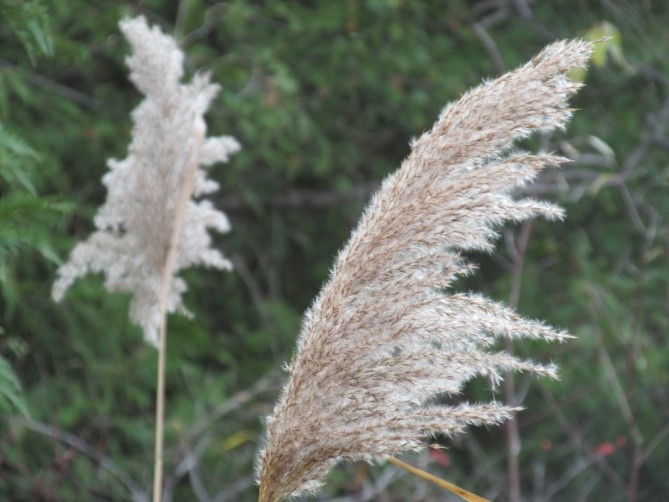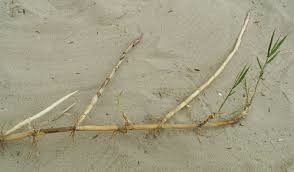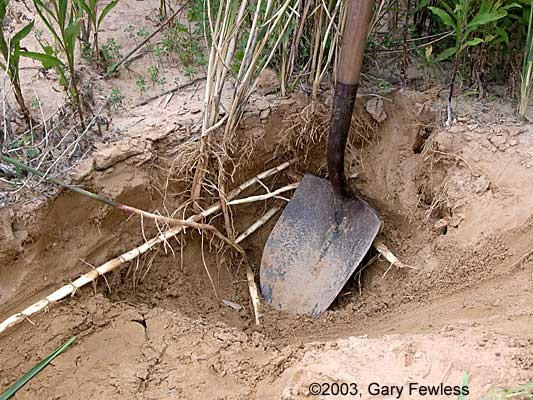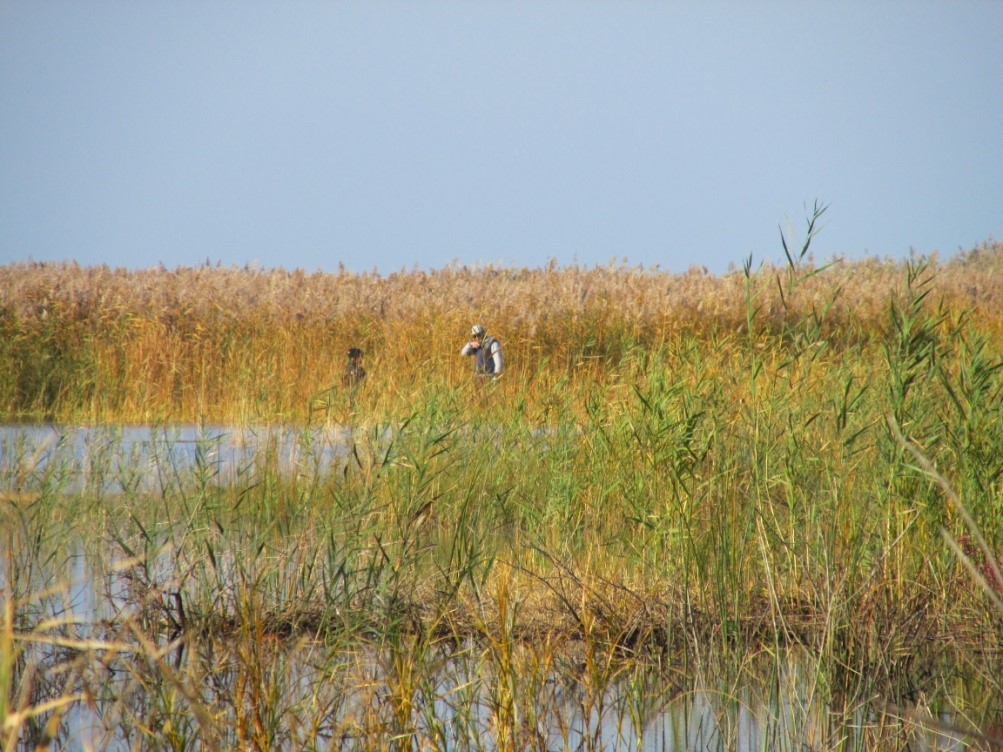Phragmites – Quick Facts
Phragmites are extremely fast growing and spreading plants
- Up to 2,000 seeds per head
- Seed heads can be 15-40 centimetres (6-16 inches) long


- As many as 200 stems can grow in a square metre (square yard).
- Wind disperses seeds up to 10 kilometres.
- Height of a mature plant can be over 5 metres (15 feet) tall.

- Average spread of rhizomes (underground stems) is 40 centimetres (16 inches) per year.
- Dense rhizome mats can range from 10 centimetres (4 inches) to 2.5 metres (8 feet) below ground.
- Stolen (stems connected to parent plant growing along the soil surface) can grow up to 18 metres (60 feet) in length.
- New plants can grow every 30 centimetres (1 foot) along stolens and rhizomes per year (Rhizomes spread below the ground. Stolon spread above the ground).


- Reed beds may be as much as 1 square kilometre (0.39 square miles) in extent.

- Reed beds can spread 5 metres (16 feet) or more per year.
- In 1 square metre (1 square yard) there can be 40,000 potentially viable seeds.
- Each stem/plant has not one, but several stolons and rhizomes.
- Phragmites produce toxins from its roots which impedes the growth of native plants, and can kill all other insect, small animal and plant species.
- Phragmites completely destroy the biodiversity which is essential for a vibrant and healthy ecosystem.
- Seeds, and/or plants are spread by wind, water, animal and human movement (i.e. boats, trailers, ATV’s, construction equipment).
- Hitchhiking rides on trucks or any piece of machinery carrying soil. A piece of root is enough for it to easily establish itself and become a plant.
Sources:
Invasive Phragmites: Best Management Practices
Invasive Species Fact Sheet
Invasive Phragmites (European Common Reed)
